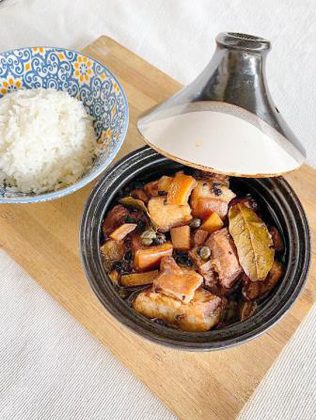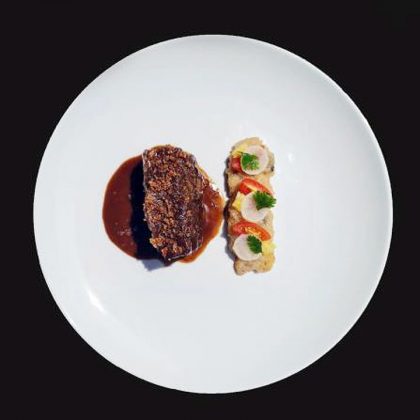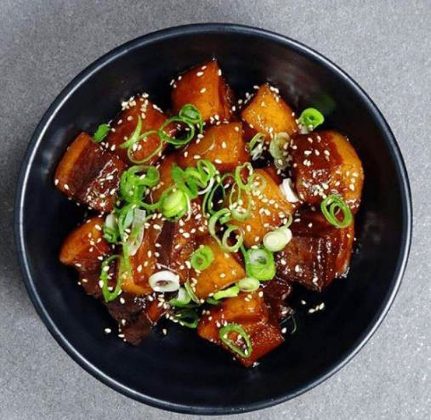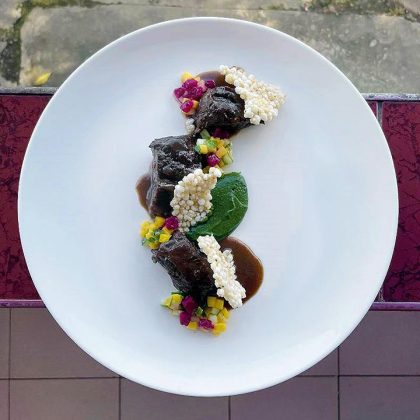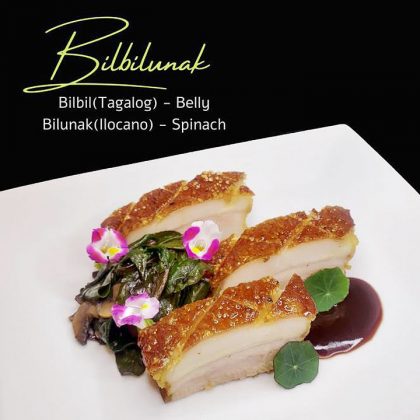Pinoy ingredients shine in Irish pork, beef recipe tilt
LABANOS, Ilocano vinegar, and pahimis coffee were just some of the local ingredients paired with Irish pork and beef by the top 10 semi-finalists in the East Meets West Culinary Competition by Bord Bia (the Irish Government Food Board). And it is this kind of mix of Filipino ingredients and Irish proteins that has the judges excited.
Out of a pool of 200 recipes, 10 semi-finalists have been selected, to be cut down further to the top five finalists by Nov. 8, after which the finalists will showcase their culinary talents by cooking their winning recipes at a cook-off. The winners will then be announced by rank highlighting the overall winner.
The champion is set to win P325,000 in prize vouchers, a hotel staycation with Irish breakfast, high-quality chef’s kit supplies, and a cooking class with the judges: chefs Philip John Golding (Founding Chairman & President of Disciples de Escoffier International Asia – Philippines) and Mark Hagan (Executive Chef of Grand Hyatt Manila – Bonifacio Global City). The judging panel is completed by last year’s winner, Donie Bigcas, and Bord Bia representatives.
The top 10 semi-finalists are:
- Bianca Abola (a student at De La Salle, College of Saint Benilde, for the recipe Bulcachong Smoked Curry),
- Mae Romelin Almirante (a student at La Flamme Bleue Center for Culinary Arts, Iloilo City, for the recipe Preserved Lemon and Capers Pork Adobo Tagine),
- Joaquin Carsi Cruz (a student at the Center for Culinary Arts – Manila, for the recipe Charred Onion Adobo with Sweet Garlic Puree and Ensaladang Mangga),
- Marc Rensus H. Espinosa (a student at the University of Santo Tomas, for the recipe Striploin Bistek),
- Mae Loren Guerrero (a student at Apicius Culinary Arts, Laoag, for Sticky Pork Belly with Sukang Ilocos),
- Ibrahim Hawari (a student at Apicius Culinary Arts, Parañaque, for the recipe Bilbilunak – Bilbil Belly and Bilunak Spinach),
- Miguel Antonio S. Lorino (Chef Instructor at the Center for Culinary Arts – Manila, for the recipe Kabisera: European Pork Belly Braised in Pahimis Coffee),
- Charmanie Pua (a student at the Center for Culinary Arts – Manila, for the recipe Bistek Asado with Garlic, and Tausi Suman, Ensaladang Labanos, Pinya at Kamatis, and Pork Crackling Crumbs),
- Louise Orlane R. Reyes (a student at the University of Santo Tomas, for Short Rib Beer Pares), and
- Kenneth M. Villanueva (a student at the University of Batangas for the recipe Deconstructed Pork Belly Sisig with Lime caviar, Chicken Liver Pate and Homemade Mayonnaise).
- From Oct. 15-30, the semi-finalists are tasked to submit and present their pork and beef recipes in their own creative way in a short video describing the positive aspects of the dish, such as aroma, taste, and texture. The judges will evaluate their recipes according to the following judging criteria: creativity (40%), presentation (30%) and video introduction (30%) for selection of the top five finalists.
“The panel of judges was thrilled by the imaginative recipes that featured endemic, regional and indigenous Filipino ingredients like labanos (radish), sukang Ilocos (vinegar), and pahimis coffee (an exclusive blend of roasted Robusta, Arabica, Excelsa, and Liberica),” said a statement from Bord Bia. It pointed to specific recipes as being the kind of that the judges found interesting: “Charmaine Pua, a student of Center for Culinary Arts Manila, won her place in the semi-finals with her entry called Bistek Asado with Garlic and Tausi Suman, with Ensaladang Labanos, Pinya at Kamatis and Pork Crackling Crumbs. This recipe was inspired by the traditional Chinese dish called Machang. Another interesting recipe was Bulcachong Smoked Curry by Bianca Abola of De La Salle University – College of Saint Benilde. Bulcachong is typically a Filipino soup cooked with carabao meat. It is unique as well as comforting and traditional.”
In an e-mail interview with BusinessWorld, Mr. Golding described what exactly the judges are looking for. “A great story! Real passion and creativity. Above all, a real tasty thought-out dish oozing with flavor,” he said.
“This is to be determined in the top 10 selection when they submit their recipe videos and I’m really looking forward to the stories behind the dishes.”
Mr. Golding said he is already looking forward to “the adobo tagine, a smoked curry, and some clever elevated regional local dishes.”
Commenting on the use of relatively obscure regional ingredients, he said, “I would say more than ever that there’s a real focus on creativity and respect for heirloom local regional recipes with sincerity and honesty.”
This marriage of ingredients, the whole point of the contest, highlights the compatibility of Irish pork and beef with what the Philippines has to offer. “Farming in the Philippines is a hot topic, while regional side dishes are going through a culinary revolution, which makes it even more relevant and exciting to pair with the Irish proteins that are grass-fed, healthy, meaty, and tasty!,” said Mr. Golding.
Mr. Bigcas, last year’s winner, said that now that he’s on the other side of the fence, he will be looking for “a dish that not only tastes good and is presented well, but (one where) we can taste the story in every bite: a dish that would tell a story from its spice to its sourness or sweetness; a balance of history, culture and personal experience. The taste and texture would also tell the story of (how) the products were cultivated and produced.” His entry last year, Bisperas ng Pista (Eve of the Festival) — braised Hamonado Pork Jowl, Sweet Potato Puree, and Pineapple Atchara — had been inspired by fiestas in his Capiz hometown.
For more details of the European Pork and Beef Campaign in the Philippines, a campaign financed with aid from the European Union, visit the website https://europeanporkbeef.com/ph, their Facebook page: http://www.facebook.com/EUPorkandBeefPH/, and Instagram page: http://www.instagram.com/euporkbeef_ph/. — Joseph L. Garcia

